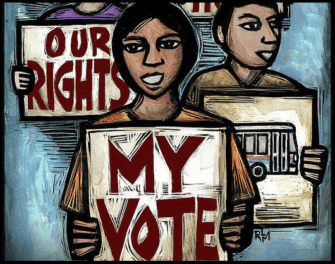
Artwork by Ricardo Levins Morales, available as a poster.
As they make their way to the polls, drop boxes, or post offices to vote in the midterm elections, voters navigate waves of voter suppression.
This is connected to efforts to limit what children learn. As Kimberlé W. Crenshaw said on her recent #BooksUnbanned Tour:
You’ve heard about gerrymandering our vote and gerrymandering our districts.
Now they’re gerrymandering our history to undermine our ability to link our present to the past.
Many of the laws about education and voting rights are made by local and state officials. That is why we urge everyone to get out the vote. Below are resources for teaching about voting rights.
Voting Rights Unit
Who Gets to Vote?
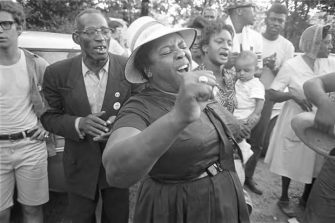
Fannie Lou Hamer at the 1966 “March Against Fear.” By Jim Peppler, Alabama Department of Archives and History
A unit with three lessons by Ursula Wolfe-Rocca provides essential historical context for today’s struggle against voter suppression and for voting rights.
The first lesson considers who should vote. Students share thoughts on what makes a “qualified” voter, then reconsider after reading an oral history by Fannie Lou Hamer. Born in 1917, Mrs. Hamer was 45 the first time she attempted to register to vote.
Here is an excerpt from that oral history interview:
McMillen: When you first tried to vote, where was that? Was that in Ruleville?
Hamer: Well, when I first tried to register it was in Indianola. I went to Indianola on the 31st of August in 1962; that was to try to register. When we got there — there was 18 of us went that day — so when we got there, there were people there with guns. We went on in the circuit clerk’s office, and he asked us what did we want; and we told him what we wanted. We wanted to try to register. He told us that all of us would have to get out of there except two.
Black Elected Officials
Echoes of Reconstruction
During Reconstruction, more than 1,500 African Americans took office — many hailing from Southern districts with majority-Black populations who voted for the very first time.
To stamp out this surge in democracy, white supremacists seized power and enacted literacy laws, grandfather clauses, poll taxes, and violence to suppress voting rights for generations to come. The level of Black political representation achieved in the 1860s and ’70s would not appear again for nearly a century.
Today, the right wing uses similar tactics to crush the democratic process — from imposing voter suppression laws to “guarding” ballot drop boxes.
People who lived through Reconstruction would recognize these strategies for what they are: efforts to protect white supremacy and wealth above all else. Learn more about this history and its legacies in our national report on teaching Reconstruction.
Teaching with Vanguard
How Black Women Broke Barriers, Won the Vote, and Insisted on Equality for All
Martha S. Jones’ Vanguard: How Black Women Broke Barriers, Won the Vote, and Insisted on Equality for All includes profiles of more than two dozen Black women who organized for voting rights.
In this lesson, students read excerpts from Jones’ book to learn about these women, share their knowledge with each other, and use what they’ve gathered to analyze Jones’ provocative title: In what sense did these women constitute a “vanguard” and why?
Rosa Parks
Fight for Voting Rights
In 1943, Rosa Parks tried to register to vote. White officials denied her application. In 1944, she and her mother joined a group led by labor and civil rights activist E. D. Nixon.
They succeeded, although as Martha Jones explains in Vanguard, the city required them to pay back poll taxes, including for all the years they were denied the right to vote.
Learn more about Parks from the young adult book, The Rebellious Life of Mrs. Rosa Parks, the film of the same name, and accompanying lessons.
Book Recommendations
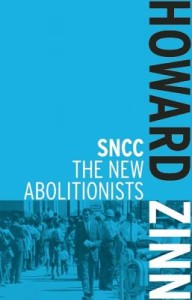 |
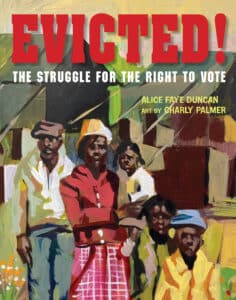 |
|
On this 100th anniversary year of Howard Zinn, we recommend his book about the brave, young voting rights activists in SNCC who broke the “cotton curtain” in Mississippi. |
Check out the list from Social Justice Books of recommended titles for all grades on the long and on-going struggle for voting rights. Also includes background reading for adults. |

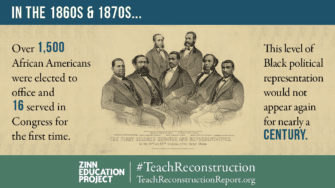
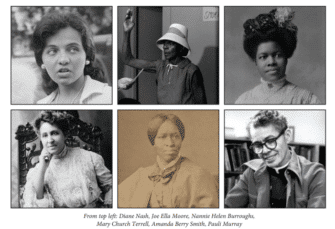
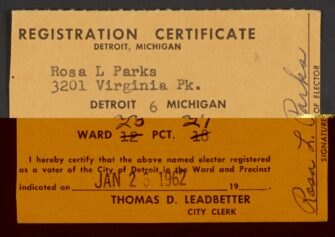

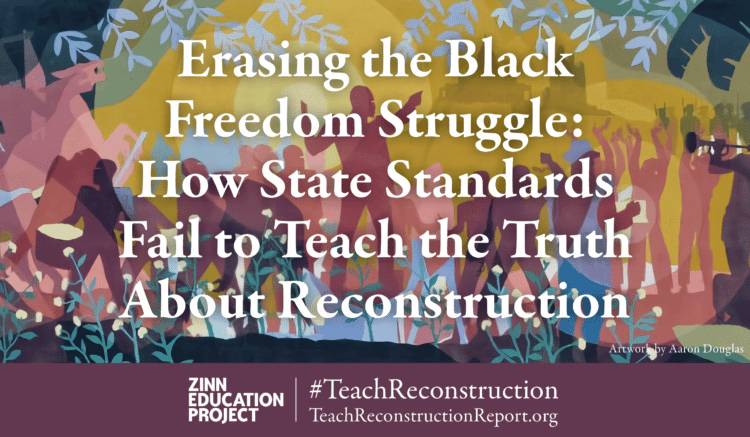
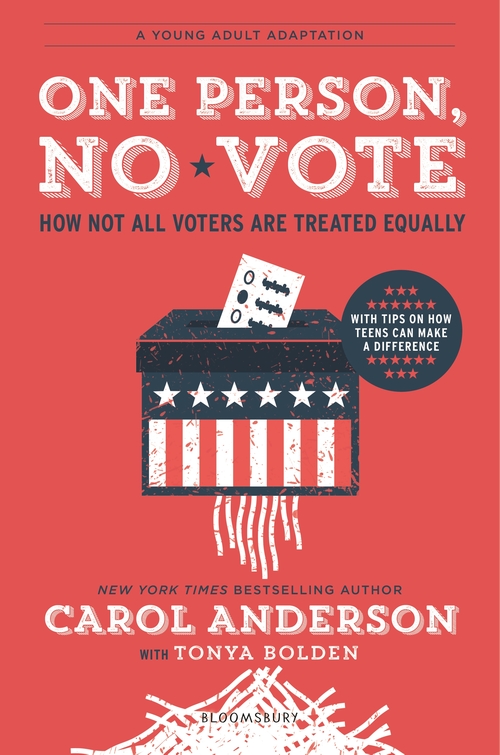
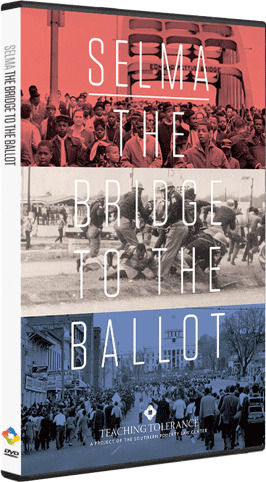
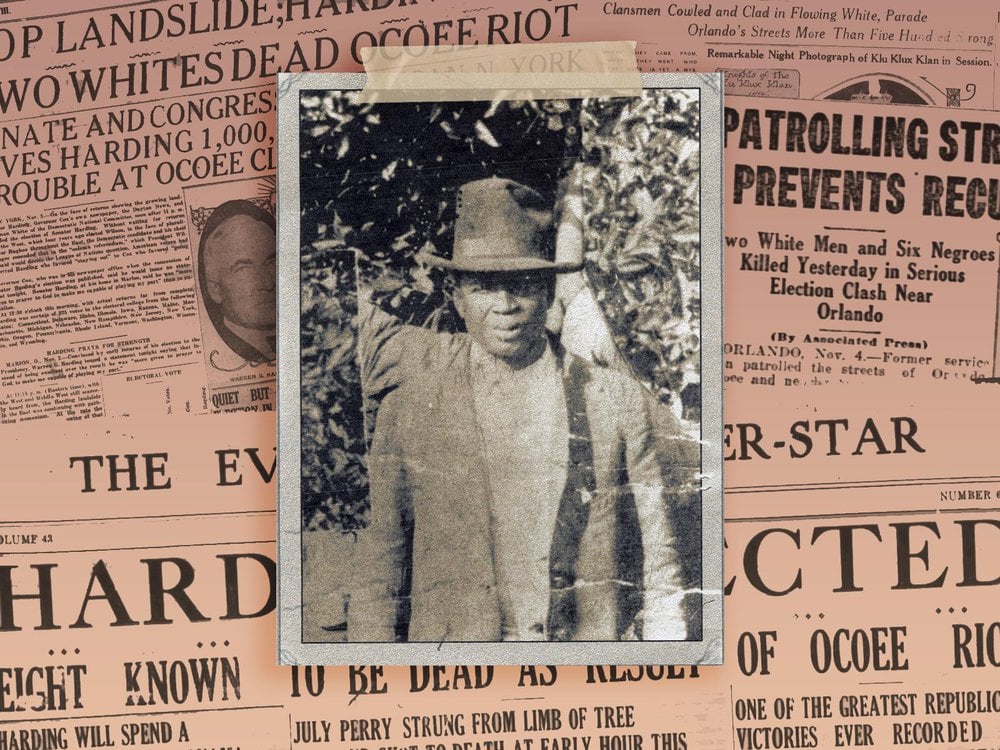
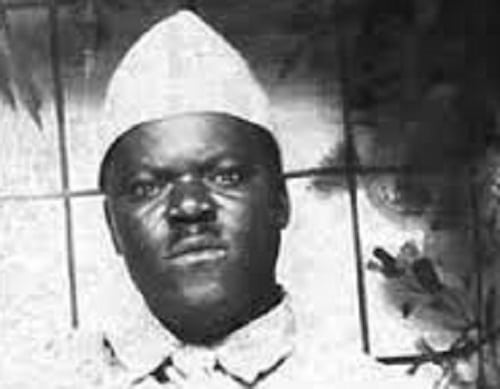
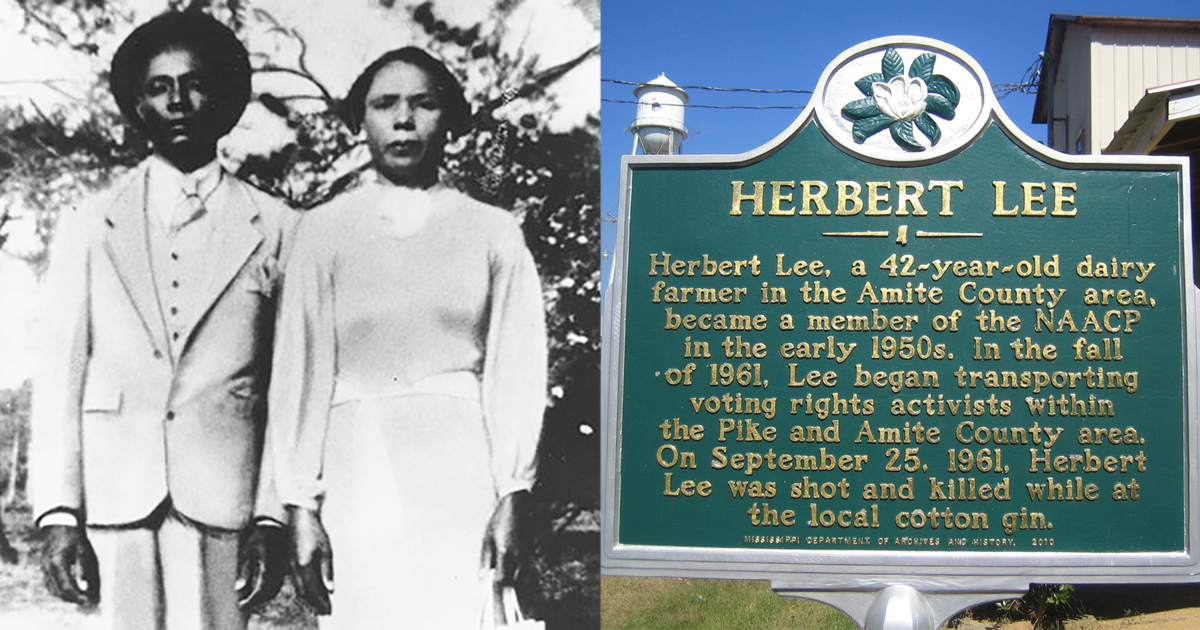
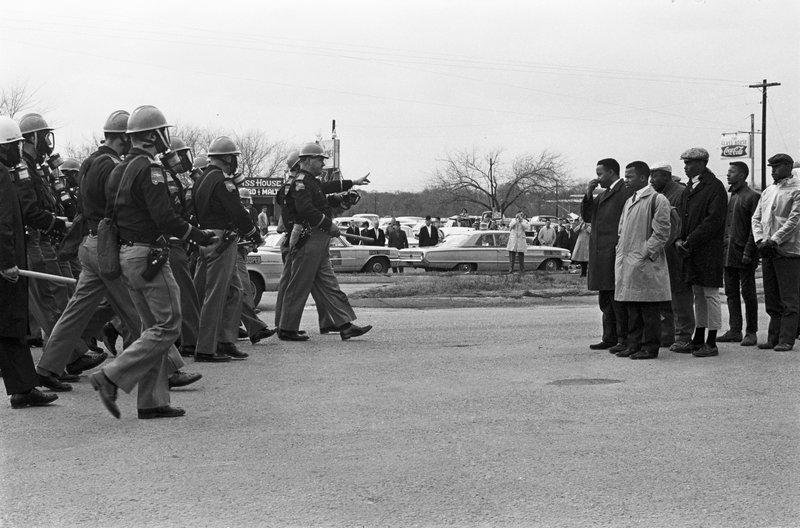





Twitter
Google plus
LinkedIn